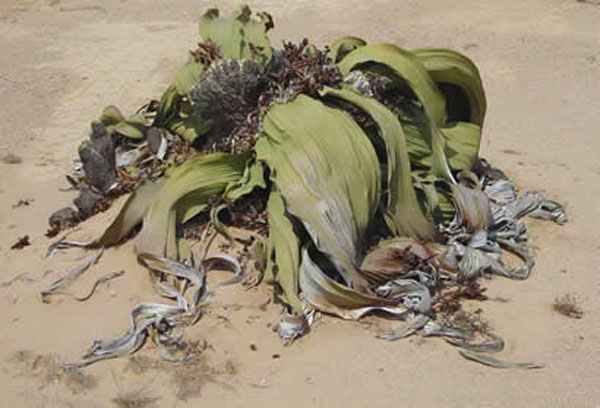

The route that took the first settlers to Lubango was tortuous and arduous. The first two hundred kilometres were flat and covered by savannah punctuated with acacias and several varieties of short and prickly bushes called espinheiras. Since rain is rare in this region, the Settlers must have felt lost in the middle of a "yellow sea".
For the first time the Settlers saw a carnivorous plant which took a strange form and only exists in the Namibe desert. The Welwitschia Mirabilis is a cactus like plant with long leaves spreading like a star in the desert sand and living for 1000 years or more. The centre of the plant has a red flower with a strong and sweet odour that attracts the unsuspecting insect to the sticky calyces trapping them to their death.
Water is non existent in this part of the country most of the year, unless it rains and then, every creek turns into a ravaging river washing everything off its bed.
Travelling at ten to fifteen kilometres in a good day, the Settlers spent more than a month crossing the coastal plateau before facing the Chela Range, an abrupt rock formation towering more than two thousand and three hundred meters above sea level.
To climb the Chela range in a modern vehicle is still an experience, despite today's modern roads. For the Settlers with their boer wagons loaded to the limits, it must have been a tremendous task.
After they overcame this obstacle the view turned into a more amicable one, with the first sight of the Angolan central plateau.

Welwitschia Mirabili over 1500 years old

The route to Lubango